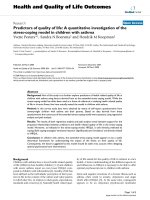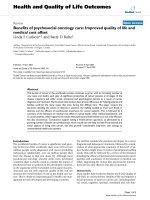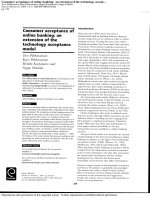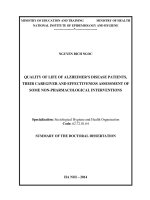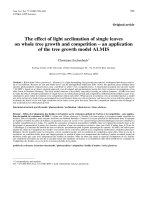Quality of life, delinquency and psychosocial functioning of adolescents in secure residential care: Testing two assumptions of the Good Lives Model
Bạn đang xem bản rút gọn của tài liệu. Xem và tải ngay bản đầy đủ của tài liệu tại đây (778.28 KB, 10 trang )
��������������������������������������������������������������������������������������������������������������������������������������������������������������������������������������������������������������������������������������������������������������������������������������������������������������������������������������������������������������������������������������������������������������������������������������������������������������������������������������������������������������������������������������������������������������������������������������������������������������������������������������������������������������������������������������������������������������������������������������������������������������������������������������������������������������������������������������������������������������������������������������������������������������������������������������������������������������������������������������������������������������������������������������������������������������������������������������������������������������������������������������������������������������������������������������������������������������������������������������������������������������������������������������������������������������������������������������������������������������������������������������������������������������������������������������������������������������������������������������������������������������������������������������������������������������������������������������������������������������������������������������������������������������������������������������������������������������������������������������������������������������������������������������������������������������������������������������������������������������������������������������������������������������������������������������������������������������������������������������������������������������������������������������������������������������������������������������������������������������������������������������������������������������������������������������������������������������������������������������������������������������������������������������������������������������������������������������������������������������������������������������������������������������������������������������������������������������������������������������������������������������������������������������������������������������������������������������������������������������������������������������������������������������������������������������������������������������������������������������������������������������������������������������������������������������������������������������������������������������������������������������������������������������������������������������������������������������������������������������������������������������������������������������������������������������������������������������������������������������������������������������������������������������������������������������������������������������������������������������������������������������������������������������������������������������������������������������������������������������������������������������������������������������������������������������������������������������������������������������������������������������������������������������������������������������������������������������������������������������������������������������������������������������������������������������������������������������������������������������������������������������������������������������������������������������������������������������������������������������������������������������������������������������������������������������������������������������������������������������������������������������������������������������������������������������������������������������������������������������������������������������������������������������������������������������������������������������������������������������������������������������������������������������������������������������������������������������������������������������������������������������������������������������������������������������������������������������������������������������������������������������������������������������������������������������������������������������������������������������������������������������������������������������������������������������������������������������������������������������������������������������������������������������������������������������������������������������������������������������������������������������������������������������������������������������������������������������������������������������������������������������������������������������������������������������������������������������������������������������������������������������������������������������������������������������������������������������������������������������������������������������������������������������������������������������������������������������������������������������������������������������������������������������������������������������������������������������������������������������������������������������������������������������������������������������������������������������������������������������������������������������������������������������������������������������������������������������������������������������������������������������������������������������������������������������������������������������������������������������������������������������������������������������������������������������������������������������������������������������������������������������������������������������������������������������������������������������������������������������������������������������������������������������������������������������������������������������������������������������������������������������������������������������������������������������������������������������������������������������������������������������������������������������������������������������������������������������������������������������������������������������������������������������������������������������������������������������������������������������������������������������������������������������������������������������������������������������������������������������������������������������������������������������������������������������������������������������������������������������������������������������������������������������������������������������������������������������������������������������������������������������������������������������������������������������������������������������������������������������������������������������������������������������������������������������������������������������������������������������������������������������������������������������������������������������������������������������������������������������������������������������������������������������������������������������������������������������������������������������������������������������������������������������������������������������������������������������������������������������������������������������������������������������������������������������������������������������������������������������������������������������������������������������������������������������������������������������������������������������������������������������������������������������������������������������������������������������������������������������������������������������������������������������������������������������������������������������������������������������������������������������������������������������������������������������������������������������������������������������������������������������������������������������������������������������������������������������������������������������������������������������������������������������������������������������������������������������������������������������������������������������������������������������������������������������������������������������������������������������������������������������������������������������������������������������������������������������������������������������������������������������������������������������������������������������������������������������������������������������������������������������������������������������������������������������������������������������������������������������������������������������������������������������������������������������������������������������������������������������������������������������������������������������������������������������������������������������������������������������������������������������������������������������������������������������������������������������������������������������������������������������������������������������������������������������������������������������������������������������������������������������������������������������������������������������������������������������������������������������������������������������������������������������������������������������������������������������������������������������������������������������������������������������������������������������������������������������������������������������������������������������������������������������������������������������������������������������������������������������������������������������������������������������������������������������������������������������������������������������������������������������������������������������������������������������������������������������������������������������������������������������������������������������������������������������������������������������������������������������������������������������������������������������������������������������������������������������������������������������������������������������������������������������������������������������������������������������������������������������������������������������������������������������������������������������������������������������������������������������������������������������������������������������������������������������������������������������������������������������������������������������������������������������������������������������������������������������������������������������������������������������������������������������������������������������������������������������������������������������������������������������������������������������������������������������������������������������������������������������������������������������������������������������������������������������������������������������������������������������������������������������������������������������������������������������������������������������������������������������������������������������������������������������������������������������������������������������������������������������������������������������������������������������������������������������������������������������������������������������������������������������������������������������������������������������������������������������������������������������������������������������������������������������������������������������������������������������������������������������������������������������������������������������������������������������������������������������������������������������������������������������������������������������������������������������������������������������������������������������������������������������������������������������������������������������������������������������������������������������������������������������������������������������������������������������������������������������������������������������������������������������������������������������������������������������������������������������������������������������������������������������������������������������������������������������������������������������������������������������������������������������������������������������������������������������������������������������������������������������������������������������������������������������������������������������������������������������������������������������������������������������������������������������������������������������������������������������������������������������������������������������������������������������������������������������������������������������������������������������������������������������������������������������������������������������������������������������������������������������������������������������������������������������������������������������������������������������������������������������������������������������������������������������������������������������������������������������������������������������������������������������������������������������������������������������������������������������������������������������������������������������������������������������������������������������������������������������������������������������������������������������������������������������������������������������������������������������������������������������������������������������������������������������������������������������������������������������������������������������������������������������������������������������������������������������������������������������������������������������������������������������������������������������������������������������������������������������������������������������������������������������������������������������������������������������������������������������������������������������������������������������������������������������������������������������������������������������������������������������������������������������������������������������������������������������������������������������������������������������������������������������������������������������������������������������������������������������������������������������������������������������������������������������������������������������������������������������������������������������������������������������������������������������������������������������������������������������������������������������������������������������������������������������������������������������������������������������������������������������������������������������������������������������������������������������������������������������������������������������������������������������������������������������������������������������������������������������������������������������������������������������������������������������������������������������������������������������������������������������������������������������������������������������������������������������������������������������������������������������������������������������������������������������������������������������������������������������������������������������������������������������������������������������������������������������������������������������������������������������������������������������������������������������������������������������������������������������������������������������������������������������������������������������������������������������������������������������������������������������������������������������������������������������������������������������������������������������������������������������������������������������������������������������������������������������������������������������������������������������������������������������������������������������������������������������������������������������������������������������������������������������������������������������������������������������������������������������������������������������������������������������������������������������������������������������������������������������������������������������������������������������������������������������������������������������������������������������������������������������������������������������������������������������������������������������������������������������������������������������������������������������������������������������������������������������������������������������������������������������������������������������������������������������������������������������������������������������������������������������������������������������������������������������������������������������������������������������������������������������������������������������������������������������������������������������������������������������������������������������������������������������������������������������������������������������������������������������������������������������������������������������������������������������������������������������������������������������������������������������������������������������������������������������������������������������������������������������������������������������������������������������������������������������������������������������������������������������������������������������������������������������������������������������������������������������������������������������������������������������������������������������������������������������������������������������������������������������������������������������������������������������������������������������������������������������������������������������������������������������������������������������������������������������������������������������������������������������������������������������������������������������������������������������������������������������������������������������������������������������������������������������������������������������������������������������������������������������������������������������������������������������������������������������������������������������������������������������������������������������������������������������������������������������������������������������������������������������������������������������������������������������������������������������������������������������������������������������������������������������������������������������������������������������������������������������������������������������������������������������������������������������������������������������������������������������������������������������������������������������������������������������������������������������������������������������������������������������������������������������������������������������������������������������������������������������������������������������������������������������������������������������������������������������������������������������������������������������������������������������������������������������������������������������������������������������������������������������������������������������������������������������������������������������������������������������������������������������������������������������������������������������������������������������������������������������������������������������������������������������������������������������������������������������������������������������������������������������������������������������������������������������������������������������������������������������������������������������������������������������������������������������������������������������������������������������������������������������������������������������������������������������������������������������������������������������������������������������������������������������������������������������������������������������������������������������������������������������������������������������������������������������������������������������������������������������������������������������������������������������������������������������������������������������������������������������������������������������������������������������������������������������������������������������������������������������������������������������������������������������������������������������������������������������������������������������������������������������������������������������������������������������������������������������������������������������������������������������������������������������������������������������������������������������������������������������������������������������������������������������������������������������������������������������������������������������������������������������������������������������������������������������������������������������������������������������������������������������������������������������������������������������������������������������������������������������������������������������������������������������������������������������������������������������������������������������������������������������������������������������������������������������������������������������������������������������������������������������������������������������������������������������������������������������������������������������������������������������������������������������������������������������������������������������������������������������������������������������������������������������������������������������������������������������������������������������������������������������������������������������������������������������������������������������������������������������������������������������������������������������������������������������������������������������������������������������������������������������������������������������������������������������������������������������������������������������������������������������������������������������������������������������������������������������������������������������������������������������������������������������������������������������������������������������������������������������������������������������������������������������������������������������������������������������������������������������������������������������������������������������������������������������������������������������������������������������������������������������������������������������������������������������������������������������������������������������������������������������������������������������������������������������������������������������������������������������������������������������������������������������������������������������������������������������������������������������������������������������������������������������������������������������������������������������������������������������������������������������������������������������������������������������������������������������������������������������������������������������������������������������������������������������������������������������������������������������������������������������������������������������������������������������������������������������������������������������������������������������������������������������������������������������������������������������������������������������������������������������������������������������������������������������������������������������������������������������������������������������������������������������������������������������������������������������������������������������������������������������������������������������������������������������������������������������������������������������������������������������������������������������������������������������������������������������������������������������������������������������������������������������������������������������������������������������������������������������������������������������������������������������������������������������������������������������������������������������������������������������������������������������������������������������������������������������������������������������������������������������������������������������������������������������������������������������������������������������������������������������������������������������������������������������������������������������������������������������������������������������������������������������������������������������������������������������������������������������������������������������������������������������������������������������������������������������������������������������������������������������������������������������������������������������������������������������������������������������������������������������������������������������������������������������������������������������������������������������������������������������������������������������������������������������������������������������������������������������������������������������������������������������������������������������������������������������������������������������������������������������������������������������������������������������������������������������������������������������������������������������������������������������������������������������������������������������������������������������������������������������������������������������������������������������������������������������������������������������������������������������������������������������������������������������������������������������������������������������������������������������������������������������������������������������������������������������������������������������������������������������������������������������������������������������������������������������������������������������������������������������������������������������������������������������������������������������������������������������������������������������������������������������������������������������������������������������������������������������������������������������������������������������������������������������������������������������������������������������������������������������������������������������������������������������������������������������������������������������������������������������������������������������������������������������������������������������������������������������������������������������������������������������������������������������������������������������������������������������������������������������������������������������������������������������������������������������������������������������������������������������������������������������������������������������������������������������������������������������������������������������������������������������������������������������������������������������������������������������������������������������������������������������������������������������������������������������������������������������������������������������������������������������������������������������������������������������������������������������������������������������������������������������������������������������������������������������������������������������������������������������������������������������������������������������������������������������������������������������������������������������������������������������������������������������������������������������������������������������������������������������������������������������������������������������������������������������������������������������������������������������������������������������������������������������������������������������������������������������������������������������������������������������������������������������������������������������������������������������������������������������������������������������������������������������������������������������������������������������������������������������������������������������������������������������������������������������������������������������������������������������������������������������������������������������������������������������������������������������������������������������������������������������������������������������������������������������������������������������������������������������������������������������������������������������������������������������������������������������������������������������������������������������������������������������������������������������������������������������������������������������������������������������������������������������������������������������������������������������������������������������������������������������������������������������������������������������������������������������������������������������������������������������������������������������������������������������������������������������������������������������������������������������������������������������������������������������������������������������������������������������������������������������������������������������������������������������������������������������������������������������������������������������������������������������������������������������������������������������������������������������������������������������������������������������������������������������������������������������������������������������������������������������������������������������������������������������������������������������������������������������������������������������������������������������������������������������������������������������������������������������������������������������������������������������������������������������������������������������������������������������������������������������������������������������������������������������������������������������������������������������������������������������������������������������������������������������������������������������������������������������������������������������������������������������������������������������������������������������������������������������������������������������������������������������������������������������������������������������������������������������������������������������������������������������������������������������������������������������������������������������������������������������������������������������������������������������������������������������������������������������������������������������������������������������������������������������������������������������������������������������������������������������������������������������������������������������������������������������������������������������������������������������������������������������������������������������������������������������������������������������������������������������������������������������������������������������������������������������������������������������������������������������������������������������������������������������������������������������������������������������������������������������������������������������������������������������������������������������������������������������������������������������������������������������������������������������������������������������������������������������������������������������������������������������������������������������������������������������������������������������������������������������������������������������������������������������������������������������������������������������������������������������������������������������������������������������������������������������������������������������������������������������������������������������������������������������������������������������������������������������������������������������������������������������������������������������������������������������������������������������������������������������������������������������������������������������������������������������������������������������������������������������������������������������������������������������������������������������������������������������������������������������������������������������������������������������������������������������������������������������������������������������������������������������������������������������������������������������������������������������������������������������������������������������������������������������������������������������������������������������������������������������������������������ollow-up.
Psychosocial problems
As a third and final step we tested how much variance
in the outcome measure psychosocial problems can be
explained by passive coping and three of the subjective
QoL domains. Again, we accounted for whether adolescents were discharged or not in the first model, and for
risk and protective factors in the second model. Then,
passive coping was added in the third model and the QoL
domains social participation, health and fulfilment in the
fourth model. In the first model, being admitted or discharged from secure residential care at follow-up did not
explain any variance in psychosocial problems at followup [see Table 4: Model 1: R2 = .010, adjusted R2 = − .001,
F(1,93) = .893, p = .347]. In the second model, adding
risk and protective factors also did not explain any variance in psychosocial problems at follow-up [Model 2:
R2 = .022, adjusted R2 = − .011, F(3,91) = .673, p = .571].
Adding passive coping to the third model explained 13.7%
of the variance in psychosocial problems at follow-up
[Model 3: R2 = .173, adjusted R2 = .137, F(4,90) = 4.718,
p < .05]. In model 4, adding the subjective QoL domains
social participation, health, and fulfilment to the model,
explained 16.9% of the variance in psychosocial problems
at follow-up [Model 4: R2 = .231, adjusted R2 = .169,
F(7,87) = 3.724, p < .05]. In this final model, passive coping was a significant predictor of psychosocial problems
at follow-up (β = .329, p < .05). This indicates that adolescents who use more passive coping strategies in their
problem solving, reported more psychosocial problems
at follow-up. Additionally, the subjective QoL domain
Table 4 Linear regression to predict psychosocial problems (N = 95)
Variable
Model 1
B
Discharged
1.18
Model 2
SE
1.25
β
B
.10
Model 3
SE
Model 4
β
B
SE
β
B
SE
β
.77
1.33
.06
.86
1.23
.07
.74
1.22
.06
Total risk score
.10
.13
.09
.15
.12
.13
.14
.12
.13
Protective score
.13
.30
.05
.14
.27
.05
.10
.27
.04
.79
.19
.39***
.66
.21
.33**
− .46
.90
− .43
.69
Passive coping
Social participation
Health
− 1.61
Fulfilment
Adjusted R2
ΔR2
− .00
− .01
B unstandardized coefficients, SE standard error, β standardized coefficients
* p < .05, ** p < .01, *** p < .001
.01
.14
.15
.80
.17
.03
− .06
− .20*
− .07
Barendregt et al. Child Adolesc Psychiatry Ment Health (2018) 12:4
health was also a significant predictor of psychosocial
problems at follow-up (β = − .198, p < .05). Adolescents
who were more satisfied with their health during their
stay in secure residential care reported less psychosocial
problems at follow-up.
Discussion
The aim of the present study was to test two assumptions
derived from the Good Lives Model. First, it is assumed
that a higher subjective QoL in secure residential care
facility is related to less self-reported delinquency and
psychosocial problems after discharge from the secure
residential care facility. The current findings show that
none of the subjective QoL domains were associated
with delinquency. With regard to psychosocial functioning, the subjective QoL domain health was a significant predictor. Adolescents who reported a lower QoL
on the health domain during their stay in a secure residential care facility had more psychosocial problems at
follow-up. Second, it is assumed that having adequate
coping skills during stay in a secure residential care facility, such as active coping, is related to less self-reported
delinquency and psychosocial problems after having left
the facility. The results of the current study support this
assumption. Adolescents who used active coping strategies when facing a stressful or problematic situation
while institutionalized reported less delinquent behaviour once they had left the facility.
The Good Lives Model places strong emphasis on
the process of engaging individuals in their treatment
by focusing on life goals and needs that are important
to them. As a result, adolescents create a ‘good life’ for
themselves, which is characterized by a sense of purpose,
autonomy and a high QoL [3]. It is hypothesized that, due
to increased feelings of agency and a higher QoL, adolescents are motivated to live a different kind of life and
this will also help prevent them from re-offending [5].
However, the findings of the present study do not support this assumption, indicating that increasing the subjective QoL of adolescents who were institutionalized did
not directly relate to a decrease in delinquency after they
were discharged. A previous study among a sample of
adult forensic psychiatric outpatients did find support for
this assumption [10]. Adult forensic psychiatric outpatients who were more satisfied with their health reported
less violent and general offenses. This difference in results
might be due to the difference in the studied population
and the context in which they resided during the time of
the study. Whereas the current study examined adolescents that were admitted to a secure residential care facility and were treated for their emotional and behavioural
problems, Bouman and colleagues studied adult forensic
psychiatric outpatients, who did not receive treatment in
Page 8 of 10
a secured setting. Thus, it may be that the secure nature
of the facility influenced the results of the current study.
A second difference between both studies that might
explain the difference in findings is that the current
study included adolescents while Bouman and colleagues
included adults. Adults and adolescents might differ in
the weightings that they give to their primary human
needs (i.e., their QoL domains). Specific needs that adults
generally find very important might not be perceived as
that important by adolescents and as a result also not
strongly relate to delinquent behaviour or psychosocial
well-being.
With regard to the second outcome variable psychosocial functioning we found a relationship with the subjective QoL domain health. This finding is comparable
to other researchers that have studied these concepts in
the general population [41]. Adolescents who reported to
be more satisfied with their health during their stay in a
secure residential care facility (e.g., being satisfied with
their medicine use and their mental health), reported
lower levels of psychosocial problems after they were
discharged from that secure residential care facility. This
finding remained even after controlling for the presence
of risk factors and the use of active and passive coping strategies. Thus, once adolescents are more satisfied
with their health during institutionalization, the likelihood that they will experience psychosocial problems
after they leave the facility will decrease, regardless of the
presence of risks or type of coping strategies used during
their admittance.
Consistent with our expectations, adolescents who
used adequate coping strategies during their admission in
a secure residential care facility reported less delinquent
behaviour and fewer psychosocial problems after they
were discharged from that facility. These relationships
were found regardless of whether adolescents had a disadvantaged background as indicated by the presence of
multiple risk factors. According to the Good Lives Model,
adolescents that are lacking adequate skills in order to
secure needs that are meaningful to them will attempt to
achieve these needs by (re-)offending [3]. The results of
the present study support this assumption and are in line
with the results of other studies [21, 23, 42]. Adolescents
using active coping strategies (e.g., actively trying to sort
out a problematic or stressful situation or seek social support with friends or family) during their stay in secure
residential care reported less delinquent behaviour after
they left the secured facility. Teaching adolescents the
use of active coping skills during their institutionalization
might decrease the chance that they will show delinquent
behaviour again after their discharge. In addition, adolescents who used passive coping strategies, such as avoiding the problem or showing a depressive response when
Barendregt et al. Child Adolesc Psychiatry Ment Health (2018) 12:4
facing a problem or stressful situation, reported higher
levels of psychosocial problems after leaving the facility.
Previous studies also showed that the use of passive coping was associated with negative outcomes among adolescent prisoners, such as a reduced well-being [26] and
increased psychological stress [43]. Our findings support
the assumption derived from the Good Lives Model that
a lack of adequate coping strategies is predictive of delinquent behaviour and psychosocial problems at follow-up,
even after controlling for the presence of risk and protective factors.
The current study has a number of limitations that
should be considered when interpreting the results.
First, only self-report measures were used to assess
delinquent behaviour and psychosocial functioning at
follow-up. Although we considered both the severity of
the offenses, as well as the number of offenses that were
committed, it remains possible that the findings reported
here under represent official registration data. Second,
the current study is part of a longitudinal study with
four waves of data. Adolescents were approached every
6 months to assess their subjective QoL during their stay
in a secure residential care facility and also 12 months
after discharge. The current study only used data from
participants who completed the first assessment and
the follow-up assessment. This way, only data was used
of 95 of the 172 included adolescents. Attrition analysis
revealed that these adolescents were more often diagnosed with an autism spectrum disorder (ASD) and with
a reactive attachment disorder (RAD), which might cause
results to be less generalizable.
Conclusions
Subjective QoL and coping are important components
of the Good Lives Model framework and are assumed to
play a role in the onset and maintenance of delinquent
behaviour and psychosocial problems [4, 6]. Strengthbased approaches are increasingly used in the treatment
of adolescents in secure residential care and might be
an important complement to the prevailing risk perspective. By solely focusing on criminogenic risks as
main treatment targets, other factors, such as subjective QoL and coping are neglected. The current study
showed that adolescents who reported a lower QoL on
the health domain had more psychosocial problems at
follow-up. No relationship was found however, between
QoL and delinquency. Based on the results of the current
study, the strongest support was found for the second
assumption derived from the Good Lives Model: adolescents with adequate coping skills report less delinquent
behaviour and fewer psychosocial problems. Adolescents
lacking adequate coping skills were more likely to experience adjustment problems upon returning to society.
Page 9 of 10
Adolescents who used active coping during their stay
in secure residential care reported lower levels of delinquent behaviour at follow-up, while adolescents who
used passive coping during their stay in secure residential care reported higher levels of psychosocial problems
at follow-up. To conclude, we could not confirm the first
assumption derived from the Good Lives Model in our
sample of adolescents with severe psychiatric problems.
However, results of this study provide support for the
second assumption and therefore underline the importance of developing and strengthening adequate coping
skills in the treatment of adolescents with severe psychiatric problems.
Authors’ contributions
All authors have contributed to the preparation of the manuscript. All authors
read and approved the final manuscript.
Author details
1
Research and Documentation Centre (WODC) of the Dutch Ministry
of Justice and Security, PO Box 20301, 2500 EH The Hague, The Netherlands.
2
GGzE Center for Child & Adolescent Psychiatry, PO Box 909 (DP 8001), 5600
AX Eindhoven, The Netherlands. 3 Scientific Center for Care & Welfare (Tranzo),
Tilburg University, PO Box 90153, 5000 LE Tilburg, The Netherlands.
Acknowledgements
We are grateful to all participating institutions for their cooperation in this
project and for the adolescents who were willing to participate. In addition,
the authors thank Lenneke Vugs M.Sc. for her help in the data coordination
and data collection. We also wish to thank all the research interns for their
help in the data collection.
Competing interests
The authors declare that they have no competing interests.
Availability of data and materials
The datasets used and analysed during the current study are available from
the corresponding author on reasonable request.
Consent for publication
All authors warrant that the material in the manuscript represents original
work, that it has not been published elsewhere before, and that it is not under
consideration for publication elsewhere. All authors give their consent for
publication of the article.
Ethics approval and consent to participate
The authors complied with the APA ethical standards and, prior to the start
of the study, the Dutch ministry of Security and Justice and the Medical
Ethics Committee for Mental Health Institutions in the Netherlands provided
approval (Ref. No: NL29932.097.09 CCMO). All participants gave their written
consent prior to the start of the study.
Funding
This study was funded by The Netherlands Organization for Health Research
and Development (ZonMw): 157.003.004. The funding body did not have any
role in the design of the study and collection, analysis, and interpretation of
data, nor in writing the manuscript.
Publisher’s Note
Springer Nature remains neutral with regard to jurisdictional claims in published maps and institutional affiliations.
Received: 21 July 2017 Accepted: 18 December 2017
Barendregt et al. Child Adolesc Psychiatry Ment Health (2018) 12:4
References
1. Farrington DP. Developmental and life-course criminology: key theoretical and empirical issues—the 2002 Sutherland award address. Criminology. 2003;41(2):221–55.
2. Stouthamer-Loeber M, Loeber R, Wei E, Farrington DP, Wikstrom POH.
Risk and promotive effects in the explanation of persistent serious delinquency in boys. J Consult Clin Psychol. 2002;70(1):111–23.
3. Fortune C-A, Ward T, Willis GM. The rehabilitation of offenders:
reducing risk and promoting better lives. Psychiatry Psychol Law.
2012;19(5):646–61.
4. Ward T, Gannon TA. Rehabilitation, etiology, and self-regulation: the comprehensive Good Lives Model of treatment for sexual offenders. Aggress
Violent Behav. 2006;11(1):77–94.
5. Ward T, Marshall WL. Good lives, aetiology and the rehabilitation of sex
offenders: a bridging theory. J Sex Aggress. 2004;10(2):153–69.
6. Purvis M, Ward T, Willis G. The Good Lives Model in practice: offence
pathways and case management. European Journal of Probation.
2011;3(2):4–28.
7. Letourneau EJ, Armstrong KS. Recidivism rates for registered and nonregistered juvenile sexual offenders. Sex Abuse. 2008;20(4):393–408.
8. Mulder E, Vermunt J, Brand E, Bullens R, Van Marle H. Recidivism in
subgroups of serious juvenile offenders: different profiles, different risks?
Crim Behav Mental Health. 2012;22(2):122–35.
9. Van Marle HJC, Hempel IS, Buck NML. Young serious and vulnerable
offenders in the Netherlands: a cohort follow-up study after completion
of a PIJ (detention) order. Crim Behav Mental Health. 2010;20(5):349–60.
10. Bouman YHA, Schene AH, De Ruiter C. Subjective well-being and
recidivism in forensic psychiatric outpatients. Int J Forensic Mental Health.
2009;8:225–34.
11. Bahr SJ, Harris L, Fisher JK, Harker Armstrong A. Successful reentry: what
differentiates successful and unsuccessful parolees? Int J Offender Ther
Comp Criminol. 2010;54(5):667–92.
12. Tripodi SJ, Kim JS, Bender K. Is employment associated with reduced
recidivism? The complex relationship between employment and crime.
Int J Offender Ther Comp Criminol. 2010;54(5):706–20.
13. Steinberg L, Chung HL, Little M. Re-entry of young offenders from the
justice system: a developmental perspective. Youth Violence Juv J.
2004;2(1):21–38.
14. Ward T. The management of risk and the design of good lives. Aust
Psychol. 2002;37(3):172–9.
15. Lehman AF. Measures of quality of life among persons with severe
and persistent mental disorders. Soc Psychiatry Psych Epidemiol.
1996;31(2):78–88.
16. Lehman AF. The well-being of chronic mental patients. Arch General
Psychiatry. 1983;40:369–73.
17. Reininghaus U, McCabe R, Burns T, Croudace T, Priebe S. The validity of
subjective quality of life measures in psychotic patients with severe psychopathology and cognitive deficits: an item response model analysis.
Qual Life Res. 2012;21(2):237–46.
18. Draine J, Solomon P. Comparison of seriously mentally ill case management clients with and without arrest histories. J Psychiatry Law.
1992;20(3):335–49.
19. Draine J, Solomon P. Jail recidivism and the intensity of case management services among homeless persons with mental illness leaving jail. J
Psychiatry Law. 1994;22:245–61.
20. Compas BE, Connor-Smith JK, Saltzman H, Thomsen AH, Wadsworth
ME. Coping with stress during childhood and adolescence: problems, progress, and potential in theory and research. Psychol Bull.
2001;127(1):87–127.
21. Gullone E, Jones T, Cummins R. Coping styles and prison experience
as predictors of psychological well-being in male prisoners. Psychiatry
Psychol Law. 2000;7(1):170–81.
Page 10 of 10
22. Ashkar PJ, Kenny DT. Views from the inside—young offenders’ subjective experiences of incarceration. Int J Offender Ther Comp Criminol.
2008;52(5):584–97.
23. Mulder E, Brand E, Bullens R, Van Marle H. Risk factors for overall
recidivism and severity of recidivism in serious juvenile offenders. Int J
Offender Ther Comp Criminol. 2011;55(1):118–35.
24. Windle M, Windle RC. Coping strategies, drinking motives, and stressful
life events among middle adolescents: associations with emotional and
behavioral problems and with academic functioning. J Abnorm Psychol.
1996;105(4):551–60.
25. Ebata AT, Moos RH. Coping and adjustment in distressed and healthy
adolescents. J Appl Dev Psychol. 1991;12:33–54.
26. Brown SL, Ireland CA. Coping style and distress in newly incarcerated
male adolescents. J Adolesc Health. 2006;38(6):656–61.
27. Van Nieuwenhuizen C, Schene AH, Koeter MWJ, Huxley PJ. The Lancashire
quality of life profile: modification and psychometric evaluation. Soc
Psychiatry Psych Epidemiol. 2001;36(1):36–44.
28. Van Nieuwenhuizen C, Schene AH, Koeter MWJ. Quality of life in
forensic psychiatry: an unreclaimed territory? Int Rev Psychiatry.
2002;14(3):198–202.
29. Harder AT, Knorth EJ, Kalverboer ME. Transition secured? A follow-up
study of adolescents who have left secure residential care. Child Youth
Serv Rev. 2011;33(12):2482–8.
30. Rosenberg M. Society and the adolescent self-image. Princeton: Princeton University Press; 1965.
31. Debats DL, Van der Lubbe PM, Wezeman FRA. On the psychometric
properties of the life regard index (lri)—a measure of meaningful life—an
evaluation in 3 independent samples based on the Dutch version. Pers
Indiv Differ. 1993;14(2):337–45.
32. Van Nieuwenhuizen C, Schene A, Boevink W, Wolf J. The Lancashire quality of life profile: first experiences in the Netherlands. Commun Mental
Health J. 1998;34(5):513–24.
33. Oliver JPJ, Huxley PJ, Priebe S, Kaiser W. Measuring the quality of life of
severely mentally ill people using the Lancashire quality of life profile. Soc
Psychiatry Psych Epidemiol. 1997;32(2):76–83.
34. Bijstra JO, Bosma HA, Jackson S. The relationship between social skills
and psychosocial functioning in early adolescence. Pers Indiv Differ.
1994;16(5):767–76.
35. Meijer SA, Sinnema G, Bijstra JO, Mellenbergh GJ, Wolters WHG. Coping
styles and locus of control as predictors for psychological adjustment of
adolescents with a chronic illness. Soc Sci Med. 2002;54(9):1453–61.
36. Borum R, Bartel P, Forth A. Manual for the structured assessment of
violence risk in youth (SAVRY), consultation edition, version 1. Tampa:
University of South Florida; 2002.
37. Van der Laan AM, Blom M, Kleemans ER. Exploring long-term and shortterm risk factors for serious delinquency. Eur J Criminol. 2009;6(5):419–38.
38. Goodman R. The strengths and difficulties questionnaire: a research note.
J Child Psychol Psychiatry. 1997;38(5):581–6.
39. Goodman R. The extended version of the strengths and difficulties
questionnaire as a guide to child psychiatric caseness and consequent
burden. J Child Psychol Psychiatry. 1999;40(5):791–9.
40. Goodman R. Psychometric properties of the strengths and difficulties
questionnaire. J Am Acad Child Psychiatry. 2001;40(11):1337–45.
41. Bartels M, Cacioppo JT, van Beijsterveldt TCEM, Boomsma DI. Exploring
the association between well-being and psychopathology in adolescents. Behav Genet. 2013;43(3):177–90.
42. Shulman EP, Cauffman E. Coping while incarcerated: a study of male
juvenile offenders. J Res Adolesc. 2011;21(4):818–26.
43. Ireland JL, Boustead R, Ireland CA. Coping style and psychological health
among adolescent prisoners: a study of young and juvenile offenders. J
Adolesc. 2005;28(3):411–23.



